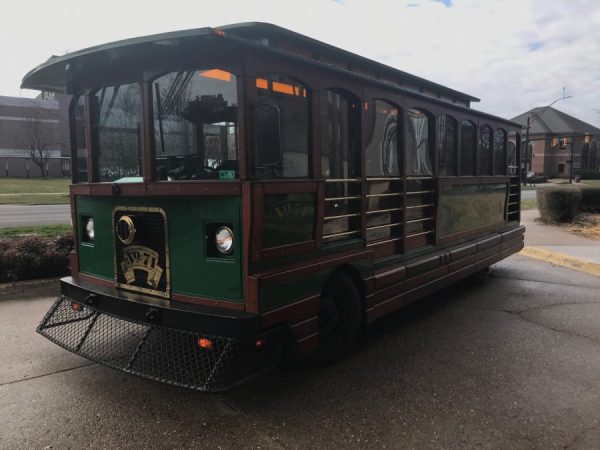Ohio River Valley Red Cross makes a difference in community
Debbie Smith’s first disaster run was to Ironton, Ohio for a house fire about three years ago. The home was destroyed, black smoke billowing from what was left. A man, illuminated by the bright lights of emergency vehicles and hooked up to oxygen with a Red Cross blanket draped over his shoulders, sat on the edge of an emergency truck and stared blankly towards the house. He lost his wife in that fire.
Smith began to realize what she had gotten herself into as community executive director of the Ohio River Valley Red Cross chapter. As desperate as the scene before her appeared, her disaster relief team was helping this man already, on the street in front of his ruined home, towards recovery.
Soon after Smith’s first disaster experience, the Red Cross Disaster Relief Program began a smoke alarm installation program free to the six counties in Ohio it serves: Jackson, Brown, Pike, Adams, Scioto and Lawrence. The organization has installed more than 2,000 smoke alarms in the two years the program has been alive, more than doubling its numbers during the second year.
“For disaster relief, home fires are a little more than 90 percent of disaster calls we respond to in this area,” Smith said. “The second is flooding.”
Smith’s first disaster run can’t compare to what Ed Helphinstine, disaster program manager, experiences on a daily basis.
“When you respond to fires, you’re meeting people on the worst day of their lives and helping them figure out what they do next,” Helphinstine said.
As a nonprofit organization, the American Red Cross depends on volunteers to make up the backbone of the organization, more specifically about 97 percent of its workforce, Smith said.
“Anytime you’re with a group from American Red Cross, nobody has to be there,” Helphinstine said. “It is a volunteer organization, especially the disaster side. It is a disaster organization and we respond to every house fire we get asked to.”
Fundraising, donations and volunteers keep the organization running smoothly. The Ohio River Valley Red Cross chapter requires approximately $350,000 annually to run its operations delivering free services and disaster relief to locals, other areas of America and the world when necessary, and family members in the military abroad.
Lawrence County was placed under the Ohio River Valley Red Cross nearly two years ago, Smith said. Before, it belonged to Huntington West Virginia’s Red Cross chapter. Therefore, the Disaster Relief Program receives funds from United Way of the River Cities located in Huntington, but only $3,500 yearly. That’s only one percent of the organization’s expenses.
One specific aid the organization prides itself on providing victims is a client assistance card, Smith said. It’s a type of debit card the Red Cross loads money onto for the disaster victims to be able to buy essentials and pay for a motel room until they are back on their feet.
Helphinstine described a house fire he responded to on April 5, the day before his interview. He said the house fire completely destroyed the top floor of a family of eight’s two-story home, in essence ruining the first floor as well from the soot of the fire and the hose water from the fire fighters. The family lost everything.
“We change people’s lives on a daily basis,” Helphinstine said. “Handing them some financial assistance to be able to buy their child some clothes is a great feeling.”
The Disaster Relief Program provides numerous safety preparedness classes to the community, including CPR and babysitting courses, and a disaster preparation program that travels to local elementary schools.
Apart from the funds donated by United Way of the River Cities, the chapter raises nearly all of the remaining money itself from special community events throughout the year.
Smith said that the organization’s needs vary from year to year because the organization is always evolving. Recently, the American Red Cross consolidated chapters, creating larger areas of community to cover. Weather also plays a large role in how much funding the organization typically needs. In 2014, the nationwide American Red Cross had a total revenue of more than $2 billion and expenses of nearly equal value with a positive remainder of $14 million.
The Disaster Relief Program sees more house fires during harsher winters because of fire hazards that develop in older homes, as well as more heat sources being used, Smith said.
“We have changed for where and when we are needed,” Smith said.
Caitlin Fowkles can be contacted at [email protected].
Your donation will help continue the work of independent student journalism at Marshall University. If you benefit from The Parthenon's free content, please consider making a donation.




